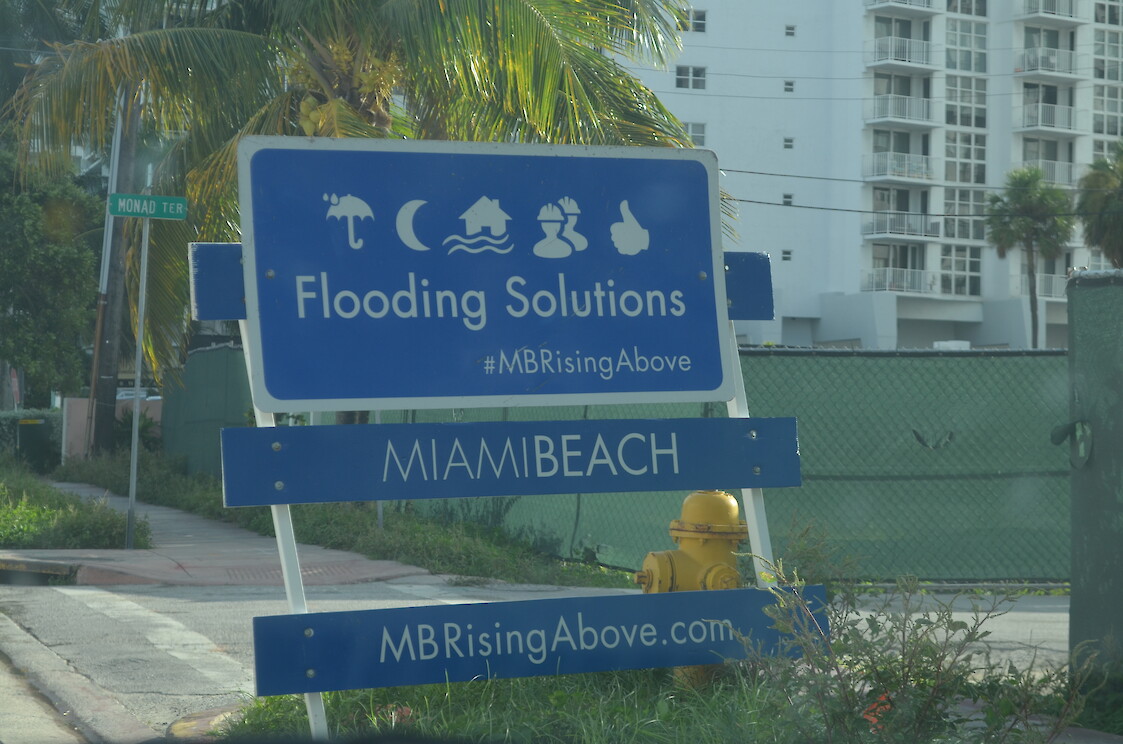When the Going Gets Tough: How Communities of All Sizes Bounce Back from Disasters
Ian Kalama ·When disaster strikes—whether it’s a natural hazard like a flood, wildfire, or pandemic, or a man-made crisis like an industrial accident—communities are forced to respond, react, and adapt. However, not all communities are equally equipped to handle these challenges.
Picture this: a hurricane is barreling toward two towns. One is a wealthy coastal hub with gleaming high-rises and a well-funded emergency response team. The other is a small rural village, where resources are scarce, but neighbors know each other by name. Both are about to be tested by nature’s fury, but how they respond will look vastly different. What makes one community bounce back quickly, while another struggles to regain its footing? It all comes down to community capacity.
Before reading further, please watch the following short video: How do natural disasters change a community
Community capacity is the secret sauce that determines how well a group of people can band together, tap into their resources, and get through tough times. Whether it’s floods, fires, or financial crises, a community’s ability to respond, react, and adapt depends on what they have—and how they use it.
From state-of-the-art coastal cities with flood defenses to tight-knit rural villages where neighbors pull together, every community has a different way of weathering the storm.

According to Chaskin et al. (2001), community capacity can be broken down into four components:
- Sense of community – the level of trust and connectedness among community members.
- Commitment to the community – people’s attachment to their place and willingness to invest in its future.
- Community resources – the skills, knowledge, and material assets that are accessible.
- Problem-solving ability – the community’s organizational and collaborative capacity to address challenges.
Community Capacity in Action: High, Moderate, and Low-Resource Communities
How do some resource-rich, resource-moderate, and resource-limited communities confront adversity, tailoring their resilience strategies to meet their unique needs and challenges?
1. High-Resource Communities
High-resource communities often have well-developed infrastructure, professional expertise, and financial reserves. They are more likely to have access to early warning systems, disaster preparedness plans, and government or insurance support for recovery. For example, affluent coastal cities such as Miami have invested in flood defenses, stormwater management systems, and community-wide evacuation plans. When hurricanes approach, these cities often have the resources to minimize damage and facilitate a speedy recovery.
These communities tend to:
- Pre-emptively reduce risk by building resilient infrastructure and adopting mitigation strategies, such as flood barriers or earthquake-resistant buildings (Lindsay, 2014).

- Utilize advanced technology like predictive modeling and real-time communication systems to prepare for and respond to disasters (Cutter et al., 2003). For example, the Miami-Dade County Emergency Operations Center has a simulated Hurricane predictive modeling system.
- Adapt quickly through effective coordination between local governments, agencies, and organizations that streamline recovery efforts. For example, the Southeast Florida Regional All Hazards Incident Management Team (AHIMT) is a specialized group that supports emergency response efforts in the region.
2. Moderate-Resource Communities
Communities with moderate resources often rely on regional government support, local volunteer groups, and grassroots efforts. While they may not have the cutting-edge technology or massive financial reserves, they often have strong social networks, volunteer groups, and mid-level infrastructure to help adapt.
These communities often:
- Leverage community networks to coordinate disaster response, such as using local schools and churches as shelters (Berke et al., 2008).
- Organize grassroots efforts like volunteer-based recovery teams to provide immediate relief to affected areas.
- Collaborate with regional agencies to obtain financial or material assistance, relying on broader government frameworks for support during major crises.

3. Low-Resource Communities
Low-resource communities are often the most vulnerable to hazards due to limited access to emergency services, funding, and infrastructure. In these areas, social networks and informal systems play a vital role in both survival and recovery. Their resilience is typically rooted in informal networks, traditional knowledge, and local cooperation. In cases where external aid is unavailable, these communities rely heavily on adaptation strategies, such as relocating homes seasonally, relying on extended family for support, or pooling labor to rebuild after disasters.
These communities typically:
- Rely on traditional knowledge and informal support networks, with extended families or neighbors providing immediate assistance (Adger, 2000).

- Adapt through localized strategies such as building homes on stilts in flood-prone areas or creating communal food stores to prepare for shortages.

- Depend on external aid from non-governmental organizations (NGOs) and international relief efforts for long-term recovery, since they often lack the financial reserves for quick reconstruction. Such organizations include the American Red Cross, which provides international assistance in times of crisis.
Key Factors Influencing Community Capacity
- Social Capital
Communities with strong social ties are better equipped to face hazards. Close-knit networks of neighbors and local organizations can facilitate faster information sharing, collective decision-making, and mutual support. Research shows that social capital is a critical determinant of community resilience, particularly in low-resource settings (Aldrich & Meyer, 2015). - Governance and Leadership
Effective leadership at the local level is essential for managing risks and coordinating responses. Communities with strong governance structures are better able to mobilize resources, create preparedness plans, and ensure that vulnerable populations receive support. A case study on the 2011 Great East Japan Earthquake demonstrated that municipalities with proactive leaders were better prepared and recovered more swiftly (Nakagawa & Shaw, 2004). - Access to Financial Resources
Financial resources allow communities to invest in infrastructure, recovery efforts, and disaster preparedness. Wealthier communities tend to have more robust safety nets, such as insurance or government aid, while low-resource communities may struggle with slow or incomplete recovery without external
Key Panel Insights on Enhancing Community Capacity
How can communities improve resilience?
- Engagement and Environmental Justice: Experts like Dwayne Porter from the Arnold School of Public Health at the University of South Carolina emphasize the need to empower communities through education and sustainable practices. ‘’Training communities to monitor their environments and identify scientific needs gives them tools for self-advocacy and long-term resilience’’.
- Trust-Building: Veronica Malabanan-Lucchese, an UMCES PhD student and environmental science programs manager at the Environmental Justice Journalism Initiative, highlights the importance of building trust, especially in historically marginalized communities. She advocates, by actively listening and engaging, leaders can strengthen community ties and foster more effective collaboration.
- Addressing Communication Barriers: Misunderstandings and logistical oversights can impede effective disaster response. Value of social networks, connections to experts, and tailored communication sensitive to cultural contexts, ensures that all community members receive accurate information and support during crises.
Examples of Community Capacity in Action
- Air Quality Monitoring in South Baltimore: To address a gap in air quality data, Veronica collaborated with the Smithsonian Environmental Research Center to deploy affordable DIY monitors in South Baltimore’s industrial areas. By partnering with local schools and STEM programs, they are not only filling data gaps but also involving the community in environmental monitoring and awareness.
- Eastport Yacht Club’s Green Team vs. Pine Street Community: Conor Keitzer, a science integrator with experience in climate resilience projects,emphasizes that community capacity is not uniform; it varies based on available resources, social networks, and organizational structures. He illustrated varying community capacities by comparing these groups. The Eastport Yacht Club’s Green Team is highly organized and engaged in climate resilience efforts, whereas the Pine Street community has less visibility and faces different priorities. This highlighted how these differences in resources and organizational structure impact each community’s ability to advocate for and address their needs.
- Challenges in the Rosemount Community: Some communities struggle to gain recognition and support from local government, and often face additional barriers in securing resources. Dwayne Porter discusses the difficulties faced by African American coastal communities, particularly the Rosemount community in South Carolina, emphasizing the importance of self-reliance, encouraging communities to take responsibility for their development rather than relying solely on external support.
Building Future Capacity Through Partnerships and Innovation
Recommended strategies for enhancing resilience:
- Exploring Local Partnerships: Community leaders can explore collaborations with businesses, nonprofits, and schools to expand resources. These partnerships can provide essential support and bridge resource gaps, creating a network of shared responsibility.
- Implement Community Land Trusts for Long-Term Resilience: Adopting community land trust models can help preserve affordable housing and protect community assets. This approach promotes long-term stability, preventing displacement and strengthening local capacity.
Conclusion
Communities with high resources have access to advanced technology, financial means, and strong governance, enabling them to prevent, respond to, and recover from disasters more effectively. In contrast, communities with lower resources often rely on social networks and informal systems but may experience slower recovery due to limited infrastructure and external support.
The insights from the panel discussion highlight the varied nature of community capacity, emphasizing its importance in building resilience, achieving environmental justice, and fostering sustainable development. Tailored approaches, based on each community’s unique strengths and needs, are essential for creating effective support systems. By building local partnerships, engaging community members in projects like air quality monitoring, and adopting models like community land trusts, communities can enhance their resilience, ensure equitable growth, and secure essential resources.
Investing in community capacity at all levels—whether by strengthening social ties, improving governance, or providing financial resources—can enhance resilience and ensure that communities are better equipped to face the growing challenges of a changing world.

References
- Aldrich, D. P., & Meyer, M. A. (2015). Social capital and community resilience. American Behavioral Scientist, 59(2), 254-269.
- Adger, W. N. (2000). Social and ecological resilience: Are they related? Progress in Human Geography, 24(3), 347-364.
- Berke, P. R., Kartez, J., & Wenger, D. (2008). Recovery after disaster: Achieving sustainable development, mitigation and equity. Disasters, 17(2), 93-109.
- Chaskin, R. J., Brown, P., Venkatesh, S., & Vidal, A. (2001). Building community capacity. Transaction Publishers.
- Cutter, S. L., Boruff, B. J., & Shirley, W. L. (2003). Social vulnerability to environmental hazards. Social Science Quarterly, 84(2), 242-261.
- Lindsay, J. R. (2014). Adaptation and resilience in the face of climate change: A critical review of current thinking. Weather and Climate Extremes, 5, 64-75.
- Nakagawa, Y., & Shaw, R. (2004). Social capital: A missing link to disaster recovery. International Journal of Mass Emergencies and Disasters, 22(1), 5-34.
About the author
Ian Kalama

I am a master's student in the Food, Agriculture, and Natural Resource Sciences program at the University of Maryland Eastern Shore, and serve as Vice President of the Graduate Student Government. My research focuses on environmental equity in urban forestry, utilizing spatial analysis to explore equitable green space distribution and ecosystem services between affluent and underserved urban communities in Maryland. Outside of academics, I enjoy writing poetry, drawing art and combining my interests in nature and environmental stewardship.
Next Post > Seas on the Rise: Extreme Flooding Impacts
Comments
-
Alison Novara 1 year ago
Ian, Wow! This blog was so great! I really loved the incorporation of the video towards the beginning! The way you framed this issue was lovely, it felt as if I was reading a story more-so than an informational blog. The way you broke down each different community and how they typically adapt to disasters was great. This is one issue that has not crossed my mind too much, but is extremely important, and you did a great job covering all bases. Overall, just really amazing job!
-
Adetutu Adebayo 1 year ago
Thank you, Ian, for the great write-up and the video. Community capacity should be invested into, to equip them with the ability and help them get through adverse situations. Also, there is a need to control these adverse situations and prevent reoccurrences!
-
Jun Suk Byun 1 year ago
Nice touch with incorporating the video! I felt that you addressed a difficult topic with great logical flow and details. Very informative!
-
Taylor Breton 1 year ago
Great Blog post Ian! I really liked how you added in a video to better visualize how communities may be affected by natural disasters.
-
Ronita 1 year ago
Hi Ian, I like how your blog underscores the importance of community capacity—shaped by resources, social networks, and governance—in determining resilience to crises. It highlights disparities and tailored strategies for high-, moderate-, and low-resource communities and advocates for equitable, localized approaches and partnerships to enhance resilience and address resource gaps effectively.
-
Stephanie Stotts 1 year ago
Nice job!! It is really important to understand community resilience in the face of increasing disaster frequency due to climate change!
-
Tahirah Johnson 1 year ago
Thank you for this insightful post! I appreciate how you’ve highlighted the resilience of communities in the face of disasters, both large and small. The way you tied in examples of adaptive strategies and recovery efforts really emphasizes the importance of collaboration and preparedness. It’s a powerful reminder that resilience is not just about bouncing back but also about growing stronger and more cohesive as a community. Great work!

